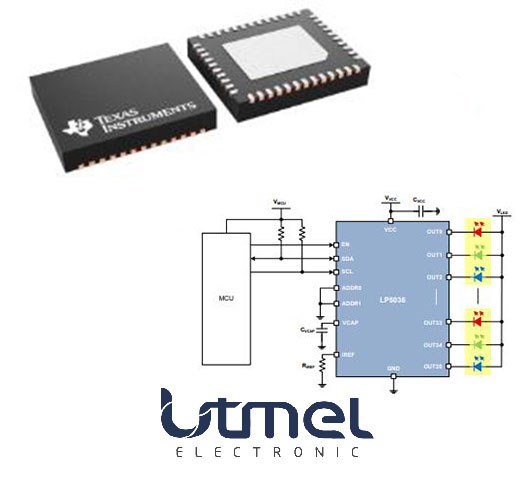Intel EP1C12Q240C8N FPGA: Key Features and Applications
4.1mm mm FPGAs Cyclone® Series 240-BFQFP 0.5mm mm 240
The EP1C12Q240C8N FPGA offers high performance, low power consumption, and reconfigurability, making it ideal for efficient and compact embedded applications.
Product Introduction
You need a solution that combines performance, flexibility, and cost-effectiveness for your embedded projects. The EP1C12Q240C8N FPGA delivers exactly that. Designed for high-performance tasks, it features 150K logic elements and embedded DSP blocks to handle real-time signal processing with ease. Its scalability and low power consumption make it perfect for applications requiring reliability and efficiency.
Key Features of EP1C12Q240C8N
High Logic Density
The EP1C12Q240C8N stands out with its high logic density, making it a powerful choice for embedded applications. You can design more complex systems without worrying about running out of resources. This FPGA chip supports up to 150K logic elements, enabling you to handle demanding tasks like real-time signal processing and hardware acceleration.
To illustrate its capabilities, here’s a quick breakdown of its features:
| Feature | Description |
|---|---|
| Logic Density | High density, enabling more complex designs in embedded systems. |
| Processing Capabilities | Designed for high performance and flexibility in various applications. |
| Power Consumption | Low power dissipation, beneficial for embedded applications. |
| Applications | Can serve as hardware accelerators, protocol converters, or microcontroller replacements. |
With this level of logic density, you can achieve higher performance and flexibility in your designs, whether you're building a protocol converter or replacing a traditional microcontroller.
Low Power Consumption
Power efficiency is critical in embedded systems, especially for battery-powered devices. The EP1C12Q240C8N consumes remarkably low power, helping you extend the lifespan of your devices while reducing heat generation. This makes it ideal for applications where energy efficiency is a priority, such as IoT devices and portable electronics.
By choosing this FPGA, you not only save energy but also reduce the need for extensive cooling solutions. This translates to lower costs and a more compact design.
Compact QFP Package
The EP1C12Q240C8N features a compact 144-pin TQFP (Thin Quad Flat Package), which is perfect for space-constrained designs. If you're working on a project where every millimeter counts, this FPGA offers a practical solution. Its small footprint allows you to integrate it seamlessly into your system without compromising performance.
Here’s a closer look at its specifications:
| Feature | Description |
|---|---|
| Logic Elements | 8,880 |
| RAM | 270 Kbits |
| Package Type | 144-pin TQFP |
| Application | Suitable for space-constrained designs |
This compact package ensures that you can maximize board space for other components, making it a smart choice for modern embedded applications.
Advantages of EP1C12Q240C8N in Embedded Applications
Parallel Processing for Enhanced Performance
You need systems that can handle multiple tasks simultaneously without compromising speed. The EP1C12Q240C8N FPGA excels at parallel processing, enabling you to execute complex operations faster than traditional processors. Unlike sequential processing, which handles tasks one at a time, this FPGA allows multiple processes to run concurrently.
For example, in embedded applications like image recognition or signal processing, parallel processing ensures faster data analysis and decision-making. This capability makes the EP1C12Q240C8N ideal for high-performance systems where speed is critical.
Tip: By leveraging the parallel processing capabilities of this FPGA, you can significantly reduce execution time and improve overall system efficiency.
Low Latency for Real-Time Operations
Real-time systems demand immediate responses. The EP1C12Q240C8N delivers low latency, ensuring your embedded applications can react instantly to inputs. Whether you're designing a robotics system or an industrial control unit, this FPGA minimizes delays, allowing your system to operate seamlessly.
Latency reduction is particularly important in applications like autonomous vehicles or medical devices, where even a slight delay can lead to errors. With the EP1C12Q240C8N, you can achieve the precision and reliability required for these critical tasks.
Note: Low latency not only enhances performance but also improves user experience, making your applications more dependable.
Reconfigurability and Reusability
Flexibility is key in embedded systems, and the EP1C12Q240C8N offers unmatched reconfigurability. You can adapt its functionality to meet changing requirements without replacing hardware. This FPGA allows you to integrate multiple features into a single chip, reducing the need for additional components.
Here are some examples of how FPGAs like the EP1C12Q240C8N demonstrate reconfigurability and reusability:
Developers use small FPGAs to create complex interfaces and logic without relying on dedicated processors.
Chips like the Altera MAX10 handle intricate mathematical operations and control multiple components, proving their versatility in hybrid systems.
In embedded applications, FPGAs simplify designs by combining analog and digital functionalities into one efficient solution.
This adaptability makes the EP1C12Q240C8N a cost-effective choice for projects requiring frequent updates or modifications. You can reuse the same chip across different applications, saving time and resources.
Callout: Reconfigurability ensures your designs stay future-proof, while reusability reduces development costs.
Use Cases and Comparisons
Common Embedded Applications
The EP1C12Q240C8N is a versatile FPGA that fits seamlessly into various embedded applications. You can use it in industrial automation systems to control machinery with precision. It’s also ideal for IoT devices, where low power consumption and compact size are critical. In automotive systems, this FPGA supports advanced driver-assistance systems (ADAS) by processing real-time data efficiently.
Medical devices also benefit from its low latency and reliability. For example, it can power diagnostic equipment that requires immediate responses. Additionally, you can integrate it into communication systems to handle high-speed data transfers and protocol conversions. Its adaptability makes it a go-to solution for developers across industries.
Comparison with Other FPGA Chips
When compared to other FPGA chips, the EP1C12Q240C8N offers a unique balance of performance and cost. While some chips prioritize high-end features, they often come with increased power consumption and complexity. This FPGA provides sufficient logic density and processing power without unnecessary overhead.
Its compact QFP package also sets it apart from bulkier alternatives. Unlike larger chips, this FPGA is easier to integrate into space-constrained designs. You get the performance you need without sacrificing efficiency or affordability.
Why EP1C12Q240C8N Stands Out
This FPGA stands out because of its reconfigurability and energy efficiency. You can adapt it to meet changing project requirements, saving time and resources. Its low power consumption ensures your devices run longer and generate less heat. These features, combined with its compact design, make it a reliable choice for embedded systems.
Tip: If you want a cost-effective and flexible FPGA for your next project, the EP1C12Q240C8N is an excellent option.
The EP1C12Q240C8N FPGA delivers unmatched speed, flexibility, and reliability for embedded systems. Its instant-on operation and cost-effectiveness make it a standout choice. If you want a dependable and efficient solution for your next project, this FPGA is worth exploring. Take advantage of its unique features to elevate your designs today.
FAQ
1. Why should you choose the EP1C12Q240C8N FPGA for embedded applications?
The EP1C12Q240C8N offers high performance, low power consumption, and reconfigurability. It’s cost-effective and ideal for space-constrained designs, making it perfect for embedded systems.
2. Can the EP1C12Q240C8N handle real-time operations?
Yes, it delivers low latency, ensuring immediate responses for real-time applications like robotics, medical devices, and industrial control systems. You can rely on its precision and speed.
3. Is the EP1C12Q240C8N suitable for IoT devices?
Absolutely! Its compact design and energy efficiency make it ideal for IoT devices. You can extend battery life and optimize performance without sacrificing reliability.
Specifications
- TypeParameter
- Package / Case
refers to the protective housing that encases an electronic component, providing mechanical support, electrical connections, and thermal management.
240-BFQFP - Surface Mount
having leads that are designed to be soldered on the side of a circuit board that the body of the component is mounted on.
YES - Mounting Type
The "Mounting Type" in electronic components refers to the method used to attach or connect a component to a circuit board or other substrate, such as through-hole, surface-mount, or panel mount.
Surface Mount - Number of I/Os173
- Packaging
Semiconductor package is a carrier / shell used to contain and cover one or more semiconductor components or integrated circuits. The material of the shell can be metal, plastic, glass or ceramic.
Tray - Series
In electronic components, the "Series" refers to a group of products that share similar characteristics, designs, or functionalities, often produced by the same manufacturer. These components within a series typically have common specifications but may vary in terms of voltage, power, or packaging to meet different application needs. The series name helps identify and differentiate between various product lines within a manufacturer's catalog.
Cyclone® - Operating Temperature
The operating temperature is the range of ambient temperature within which a power supply, or any other electrical equipment, operate in. This ranges from a minimum operating temperature, to a peak or maximum operating temperature, outside which, the power supply may fail.
0°C~85°C TJ - JESD-609 Code
The "JESD-609 Code" in electronic components refers to a standardized marking code that indicates the lead-free solder composition and finish of electronic components for compliance with environmental regulations.
e3 - Part Status
Parts can have many statuses as they progress through the configuration, analysis, review, and approval stages.
Obsolete - Moisture Sensitivity Level (MSL)
Moisture Sensitivity Level (MSL) is a standardized rating that indicates the susceptibility of electronic components, particularly semiconductors, to moisture-induced damage during storage and the soldering process, defining the allowable exposure time to ambient conditions before they require special handling or baking to prevent failures
3 (168 Hours) - Number of Terminations240
- ECCN Code
An ECCN (Export Control Classification Number) is an alphanumeric code used by the U.S. Bureau of Industry and Security to identify and categorize electronic components and other dual-use items that may require an export license based on their technical characteristics and potential for military use.
3A991 - Terminal Finish
Terminal Finish refers to the surface treatment applied to the terminals or leads of electronic components to enhance their performance and longevity. It can improve solderability, corrosion resistance, and overall reliability of the connection in electronic assemblies. Common finishes include nickel, gold, and tin, each possessing distinct properties suitable for various applications. The choice of terminal finish can significantly impact the durability and effectiveness of electronic devices.
Matte Tin (Sn) - HTS Code
HTS (Harmonized Tariff Schedule) codes are product classification codes between 8-1 digits. The first six digits are an HS code, and the countries of import assign the subsequent digits to provide additional classification. U.S. HTS codes are 1 digits and are administered by the U.S. International Trade Commission.
8542.39.00.01 - Voltage - Supply
Voltage - Supply refers to the range of voltage levels that an electronic component or circuit is designed to operate with. It indicates the minimum and maximum supply voltage that can be applied for the device to function properly. Providing supply voltages outside this range can lead to malfunction, damage, or reduced performance. This parameter is critical for ensuring compatibility between different components in a circuit.
1.425V~1.575V - Terminal Position
In electronic components, the term "Terminal Position" refers to the physical location of the connection points on the component where external electrical connections can be made. These connection points, known as terminals, are typically used to attach wires, leads, or other components to the main body of the electronic component. The terminal position is important for ensuring proper connectivity and functionality of the component within a circuit. It is often specified in technical datasheets or component specifications to help designers and engineers understand how to properly integrate the component into their circuit designs.
QUAD - Terminal Form
Occurring at or forming the end of a series, succession, or the like; closing; concluding.
GULL WING - Peak Reflow Temperature (Cel)
Peak Reflow Temperature (Cel) is a parameter that specifies the maximum temperature at which an electronic component can be exposed during the reflow soldering process. Reflow soldering is a common method used to attach electronic components to a circuit board. The Peak Reflow Temperature is crucial because it ensures that the component is not damaged or degraded during the soldering process. Exceeding the specified Peak Reflow Temperature can lead to issues such as component failure, reduced performance, or even permanent damage to the component. It is important for manufacturers and assemblers to adhere to the recommended Peak Reflow Temperature to ensure the reliability and functionality of the electronic components.
245 - Supply Voltage
Supply voltage refers to the electrical potential difference provided to an electronic component or circuit. It is crucial for the proper operation of devices, as it powers their functions and determines performance characteristics. The supply voltage must be within specified limits to ensure reliability and prevent damage to components. Different electronic devices have specific supply voltage requirements, which can vary widely depending on their design and intended application.
1.5V - Terminal Pitch
The center distance from one pole to the next.
0.5mm - Reach Compliance Code
Reach Compliance Code refers to a designation indicating that electronic components meet the requirements set by the Registration, Evaluation, Authorization, and Restriction of Chemicals (REACH) regulation in the European Union. It signifies that the manufacturer has assessed and managed the chemical substances within the components to ensure safety and environmental protection. This code is vital for compliance with regulations aimed at minimizing risks associated with hazardous substances in electronic products.
compliant - Time@Peak Reflow Temperature-Max (s)
Time@Peak Reflow Temperature-Max (s) refers to the maximum duration that an electronic component can be exposed to the peak reflow temperature during the soldering process, which is crucial for ensuring reliable solder joint formation without damaging the component.
40 - Base Part Number
The "Base Part Number" (BPN) in electronic components serves a similar purpose to the "Base Product Number." It refers to the primary identifier for a component that captures the essential characteristics shared by a group of similar components. The BPN provides a fundamental way to reference a family or series of components without specifying all the variations and specific details.
EP1C12 - JESD-30 Code
JESD-30 Code refers to a standardized descriptive designation system established by JEDEC for semiconductor-device packages. This system provides a systematic method for generating designators that convey essential information about the package's physical characteristics, such as size and shape, which aids in component identification and selection. By using JESD-30 codes, manufacturers and engineers can ensure consistency and clarity in the specification of semiconductor packages across various applications and industries.
S-PQFP-G240 - Number of Outputs173
- Qualification Status
An indicator of formal certification of qualifications.
Not Qualified - Power Supplies
an electronic circuit that converts the voltage of an alternating current (AC) into a direct current (DC) voltage.?
1.51.5/3.3V - Clock Frequency
Clock frequency, also known as clock speed, refers to the rate at which a processor or electronic component can execute instructions. It is measured in hertz (Hz) and represents the number of cycles per second that the component can perform. A higher clock frequency typically indicates a faster processing speed and better performance. However, it is important to note that other factors such as architecture, efficiency, and workload also play a significant role in determining the overall performance of a component. In summary, clock frequency is a crucial parameter that influences the speed and efficiency of electronic components in processing data and executing tasks.
275MHz - Number of Inputs249
- Programmable Logic Type
Generally, programmable logic devices can be described as being one of three different types: Simple programmable logic devices (SPLD) Complex programmable logic devices (CPLD) Field programmable logic devices (FPGA).
FIELD PROGRAMMABLE GATE ARRAY - Number of Logic Elements/Cells12060
- Total RAM Bits
Total RAM Bits refers to the total number of memory bits that can be stored in a Random Access Memory (RAM) component. RAM is a type of computer memory that allows data to be accessed in any random order, making it faster than other types of memory like hard drives. The total RAM bits indicate the capacity of the RAM chip to store data temporarily for quick access by the computer's processor. The more total RAM bits a component has, the more data it can store and process at any given time, leading to improved performance and multitasking capabilities.
239616 - Number of LABs/CLBs1206
- Height Seated (Max)
Height Seated (Max) is a parameter in electronic components that refers to the maximum allowable height of the component when it is properly seated or installed on a circuit board or within an enclosure. This specification is crucial for ensuring proper fit and alignment within the overall system design. Exceeding the maximum seated height can lead to mechanical interference, electrical shorts, or other issues that may impact the performance and reliability of the electronic device. Manufacturers provide this information to help designers and engineers select components that will fit within the designated space and function correctly in the intended application.
4.1mm - Width32mm
- Length32mm
- RoHS Status
RoHS means “Restriction of Certain Hazardous Substances” in the “Hazardous Substances Directive” in electrical and electronic equipment.
RoHS Compliant
Datasheet PDF
- Datasheets :
- PCN Packaging :
- PCN Obsolescence/ EOL :
 Analog Devices AD8032 Selection Guide for Your Projects
Analog Devices AD8032 Selection Guide for Your Projects04 July 2025112
 Essential Tips for Resolving STM32F407ZET6 Connectivity Issues
Essential Tips for Resolving STM32F407ZET6 Connectivity Issues24 July 2025182
 Unraveling the Zilog ZNEO™ Z16F Series Microcontroller: A Comprehensive Technical Analysis
Unraveling the Zilog ZNEO™ Z16F Series Microcontroller: A Comprehensive Technical Analysis29 February 2024290
 UC3843N SMPS Controller: Pinout, Equivalent and Datasheet
UC3843N SMPS Controller: Pinout, Equivalent and Datasheet18 March 20223269
![LA4440 Power Amplifier: 6W 2-Channel Amplifier, Pinout and Circuit Diagram [Video]](https://res.utmel.com/Images/Article/1c557673-72fd-4beb-b307-0680a3165ac9.jpg) LA4440 Power Amplifier: 6W 2-Channel Amplifier, Pinout and Circuit Diagram [Video]
LA4440 Power Amplifier: 6W 2-Channel Amplifier, Pinout and Circuit Diagram [Video]08 December 202123800
 LP5036RJVR LED Display Driver:Circuit, Datasheet, and Pinout
LP5036RJVR LED Display Driver:Circuit, Datasheet, and Pinout18 March 2022691
 Pic16f84a Powerful FLASH/EEPROM 8-Bit Microcontroller:Pinout,Features,Package
Pic16f84a Powerful FLASH/EEPROM 8-Bit Microcontroller:Pinout,Features,Package22 September 20213743
 AD9834 DDS Device: Pinout, Datasheet and Alternatives
AD9834 DDS Device: Pinout, Datasheet and Alternatives02 September 20212683
 What is Bluetooth Low Energy (BLE) Audio Technology?
What is Bluetooth Low Energy (BLE) Audio Technology?26 April 20224642
 What is ISP (Image Signal Processor)?
What is ISP (Image Signal Processor)?15 September 202134175
 Introduction to Types of Diodes
Introduction to Types of Diodes20 October 202514597
 The World's Top 10 Innovative LED Drivers
The World's Top 10 Innovative LED Drivers12 February 20223471
 Analysis of Resistors in Series and Parallel
Analysis of Resistors in Series and Parallel16 October 202515044
 An Analysis of Current-Source Inverters Using High-Frequency WBG Switches
An Analysis of Current-Source Inverters Using High-Frequency WBG Switches09 May 20232959
 Comparison of Advantages and Disadvantages of Common Switch Mode Power Supply(SMPS)
Comparison of Advantages and Disadvantages of Common Switch Mode Power Supply(SMPS)21 January 20225970
 Bearing: Features, Types and Uses
Bearing: Features, Types and Uses08 February 20227931
Intel
In Stock: 671
United States
China
Canada
Japan
Russia
Germany
United Kingdom
Singapore
Italy
Hong Kong(China)
Taiwan(China)
France
Korea
Mexico
Netherlands
Malaysia
Austria
Spain
Switzerland
Poland
Thailand
Vietnam
India
United Arab Emirates
Afghanistan
Åland Islands
Albania
Algeria
American Samoa
Andorra
Angola
Anguilla
Antigua & Barbuda
Argentina
Armenia
Aruba
Australia
Azerbaijan
Bahamas
Bahrain
Bangladesh
Barbados
Belarus
Belgium
Belize
Benin
Bermuda
Bhutan
Bolivia
Bonaire, Sint Eustatius and Saba
Bosnia & Herzegovina
Botswana
Brazil
British Indian Ocean Territory
British Virgin Islands
Brunei
Bulgaria
Burkina Faso
Burundi
Cabo Verde
Cambodia
Cameroon
Cayman Islands
Central African Republic
Chad
Chile
Christmas Island
Cocos (Keeling) Islands
Colombia
Comoros
Congo
Congo (DRC)
Cook Islands
Costa Rica
Côte d’Ivoire
Croatia
Cuba
Curaçao
Cyprus
Czechia
Denmark
Djibouti
Dominica
Dominican Republic
Ecuador
Egypt
El Salvador
Equatorial Guinea
Eritrea
Estonia
Eswatini
Ethiopia
Falkland Islands
Faroe Islands
Fiji
Finland
French Guiana
French Polynesia
Gabon
Gambia
Georgia
Ghana
Gibraltar
Greece
Greenland
Grenada
Guadeloupe
Guam
Guatemala
Guernsey
Guinea
Guinea-Bissau
Guyana
Haiti
Honduras
Hungary
Iceland
Indonesia
Iran
Iraq
Ireland
Isle of Man
Israel
Jamaica
Jersey
Jordan
Kazakhstan
Kenya
Kiribati
Kosovo
Kuwait
Kyrgyzstan
Laos
Latvia
Lebanon
Lesotho
Liberia
Libya
Liechtenstein
Lithuania
Luxembourg
Macao(China)
Madagascar
Malawi
Maldives
Mali
Malta
Marshall Islands
Martinique
Mauritania
Mauritius
Mayotte
Micronesia
Moldova
Monaco
Mongolia
Montenegro
Montserrat
Morocco
Mozambique
Myanmar
Namibia
Nauru
Nepal
New Caledonia
New Zealand
Nicaragua
Niger
Nigeria
Niue
Norfolk Island
North Korea
North Macedonia
Northern Mariana Islands
Norway
Oman
Pakistan
Palau
Palestinian Authority
Panama
Papua New Guinea
Paraguay
Peru
Philippines
Pitcairn Islands
Portugal
Puerto Rico
Qatar
Réunion
Romania
Rwanda
Samoa
San Marino
São Tomé & Príncipe
Saudi Arabia
Senegal
Serbia
Seychelles
Sierra Leone
Sint Maarten
Slovakia
Slovenia
Solomon Islands
Somalia
South Africa
South Sudan
Sri Lanka
St Helena, Ascension, Tristan da Cunha
St. Barthélemy
St. Kitts & Nevis
St. Lucia
St. Martin
St. Pierre & Miquelon
St. Vincent & Grenadines
Sudan
Suriname
Svalbard & Jan Mayen
Sweden
Syria
Tajikistan
Tanzania
Timor-Leste
Togo
Tokelau
Tonga
Trinidad & Tobago
Tunisia
Turkey
Turkmenistan
Turks & Caicos Islands
Tuvalu
U.S. Outlying Islands
U.S. Virgin Islands
Uganda
Ukraine
Uruguay
Uzbekistan
Vanuatu
Vatican City
Venezuela
Wallis & Futuna
Yemen
Zambia
Zimbabwe















